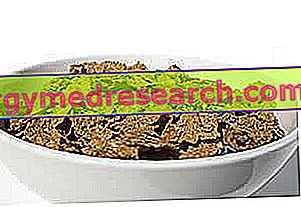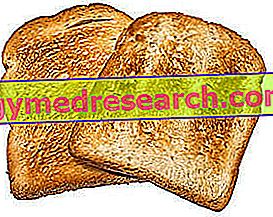The problem of fecal incontinence

Fortunately, fecal incontinence is not an incurable disorder as could be assumed. A specific medical attack cure, supported by a focused and balanced diet, is undoubtedly the ideal solution to remove this unpleasant disorder and prevent complications and relapses.
To cure fecal incontinence definitively it is necessary - and indispensable - to act on several fronts:
- Eradicate the cause that caused it: to find the right cure it is therefore important to undergo all the diagnostic tests necessary for the correct evaluation of the disorder
- Correct incorrect eating habits
- Taking care of your body: for this purpose, personal intimate hygiene plays a leading role
- Always discuss with your doctor about any doubts and problems, especially in the presence of abnormal or suspicious symptoms / signs
There is no universal cure for fighting faecal incontinence because the disorder has a multifactorial origin. In fact, while some patients need surgery, for others it is sufficient to change eating habits and follow an exclusively pharmacological treatment.
Pharmacological treatment
Pharmacological treatment against fecal incontinence is also not the same for all patients. As we have seen, in fact, this defecation disorder can depend on completely different or even opposite problems (eg chronic constipation or chronic diarrhea).
- Case 1: fecal incontinence dependent on chronic constipation / fecal impaction. The discomfort can be eradicated through the specific assumption of laxatives. The drug most commonly used for this purpose is lactulose, an extremely delicate osmotic laxative active ingredient, capable of attracting water in the intestinal lumen, softening the faeces and stimulating intestinal peristalsis. Even the suppositories of glycerin or bisacodyl (eg Dulcolax) can benefit in the presence of fecal incontinence related to constipation.
- Case 2: fecal incontinence dependent on chronic diarrhea. The disorder should be clearly treated with antidiarrheal drugs:
- The principle Loperamide (eg. Imodium), is particularly indicated to alleviate diarrhea, thereby improving faecal incontinence disorder. Loperamide increases the tone of the anal sphincter, simultaneously reducing bowel movements (peristaltic contractions) and evacuation frequency.
- Anticholinergics (eg Atropine, Belladonna): indicated to reduce intestinal secretions and regulate viscera movements.
- Opioids (eg codeine): in addition to cough treatment, some opioids such as codeine are used as inhibitors of intestinal motility. However, it is worth noting that these drugs, compared to the previous ones, are much less used for treating faecal incontinence because of the important side effects related to them.
- Activated carbon: active ingredient indicated for reducing the water content in faeces.
Alternative interventions
For all those cases of partial faecal incontinence (mild), a new therapeutic-rehabilitative method was developed - known as biofeedback - very useful for detecting the subject's sphincter activity. This is an intervention strategy indicated for patients who experience a reduction in rectal sensitivity, but who still have a marked sphincter activity. Biofeedback is a special rehabilitation technique aimed at strengthening the pelvic floor muscles: here, the patient is "educated" to contract and release the muscles in the anal seat in order to resist the stimulus of defecation at inopportune moments (for further information: read Kegel exercises).
The biofeedback treatment, always performed in the outpatient setting, involves the introduction of a small probe in the anal canal and in a part of the patient's rectal ampoule. This probe, which records the pressures exerted on the walls of the anal canal, is connected to a computer that processes the data and transforms them into pulses and colored bars. The different colors of the bars indicate the degree of contraction and relaxation of the affected muscles. After obtaining the right indications from the doctor on the correct way to perform the pelvic floor exercises, the patient himself will evaluate how he performs them by observing and studying the colored bands recorded by the monitor.
It is not uncommon that, as a support to biofeedback, the patient is also subjected to passive gymnastics, known as electrotherapy : this treatment consists in stimulating the fibers of the anal muscles through the insertion of an electrode in the anal canal. The benefits derived from electrotherapy are however uncertain; therefore its implementation is not always justified.
Some patients suffering from fecal incontinence can benefit from the application of so-called anal swabs : they are real corks that are inserted into the anus to hinder the involuntary loss of fecal material.
Surgical interventions
When neither drug action nor rehabilitation strategies are sufficient to combat faecal incontinence, the patient is forced to undergo surgery. Very often, surgical procedures are necessary when fecal incontinence is related to rectal prolapse or birth injuries. Depending on the underlying cause, the most performed surgical treatments include:
- Surgical correction of rectal prolapse, hemorrhoids, rectocele
- Sphincteroplasty: indicated to repair an anal sphincter where there is a traumatic lesion of the muscles involved in defecation.
- Restoration of the muscle tone of the anal sphincter (gracileplastica): in some cases, it is possible to repair the anal sphincter by wrapping on it a muscle taken from the thigh of the same patient. The method, very delicate, consists precisely in the transposition with electrostimulation of the gracilis muscle (adductor muscle that occupies the medial portion of the thigh) to the anus.
- Artificial anal sphincter: surgical intervention indicated for severe cases of faecal incontinence related to damage to the anal sphincter. At the level of the anal canal a sort of inflatable ring is implanted that can control the loss of fecal material. When it is swollen, the device prevents the anal sphincter from releasing (therefore there is no loss of feces); vice versa, when it is desired to defecate, it is possible to deflate this special ring by means of an external pump, thus activating the normal intestinal activity.
- Colostomy: it is undoubtedly a drastic surgical choice, performed as a last resort for the patient suffering from a serious form of fecal incontinence. During this operation a new artificial communication is created which connects the colon with the abdominal wall through an opening in the abdomen. A special bag is attached to this opening to collect the fecal material.
Diet
Changes in eating habits can undoubtedly significantly improve the disturbance of fecal incontinence (and even prevent its reappearance). The first trick is the total elimination of alcohol and the limitation of caffeine in the diet: when taken in excess, these two substances (alcohol and caffeine) can indeed induce diarrhea and fecal incontinence.
When the defecation disorder depends strictly on diarrhea, the patient should prefer foods that can compact intestinal material. For this purpose, the recommendation is to increase the amount of dietary fiber - coming from bran and whole foods, for example - and to limit the intake of all those foods capable of inducing a laxative effect. Even spices, spicy foods, smoked foods, artificial sweeteners should be avoided or at least limited in patients subjected to diarrhea (see: diet and diarrhea).
Some people who are lactose intolerant tend to develop not only diarrhea but also fecal incontinence: for this reason, the elimination from the diet of foods containing this sugar turns out to be an important food trick to prevent diarrhea and fecal incontinence.
Patients suffering from chronic constipation should instead pay particular attention to the correct intake of both fibers and liquids (drink at least 2 liters of water per day), two essential components to soften the intestinal contents, facilitate evacuation, thus preventing incontinence fecal.



